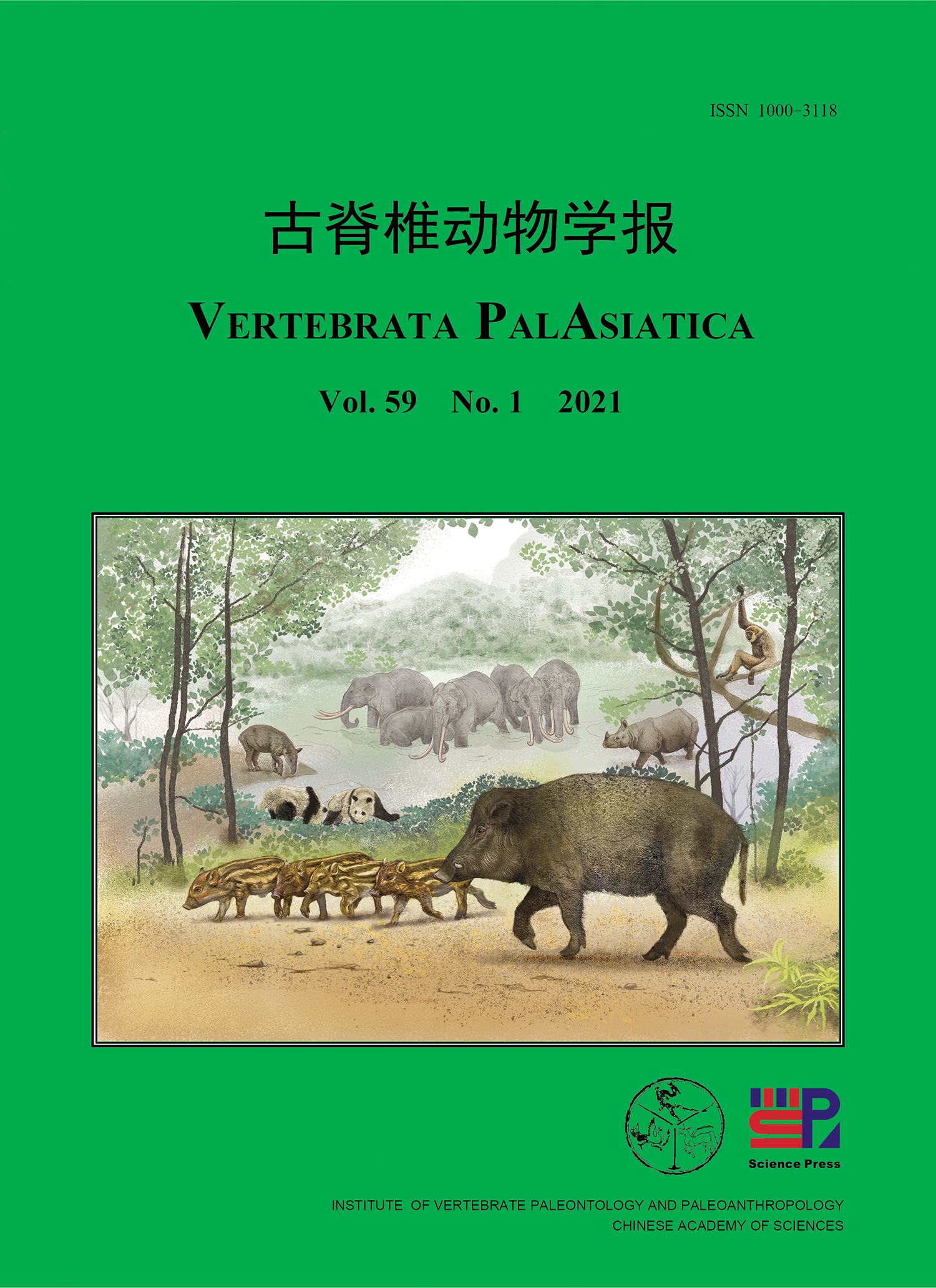
封面说明:我国南方地区大熊猫–剑齿象动物群的组成在整个更新世期间都基本保持稳定,主要由大熊猫、剑齿象、貘和各种灵长类动物所组成;此外,还有豪猪、竹鼠、豺、黑熊、猪獾、鬣狗、灵猫、猫科动物、亚洲象、麂子、苏门犀、独角犀、野猪、水鹿、水牛及大额牛等。自晚更新世以来,动物群中的野猪和各种鹿类动物逐渐占据了主导地位,在最近新发现的江西萍乡杨家湾动物群中,野猪化石数量占到化石总量的49%之多。在更新世末,剑齿象和貘都在我国相继灭绝,犀牛残存到20世纪中期,亚洲象及个别大型牛科动物现今只在云南地区零星分布;而野猪却凭借其超强的繁殖和适应能力成为了大熊猫–剑齿象动物群的“终极赢家”。详见本期孙吉嘉等人文。(绘图:郭肖聪)
Cover image: The Ailuropoda-Stegodon fauna in southern China persisted throughout the whole Pleistocene Epoch, which was dominated by Ailuropoda, Stegodon and tapirs (including Tapirus and Megatapirus) as well as diversified non-human primates; in addition, Hystrix, Rhizomys, Cuon, Arctonyx, hyenas (including Pachycrocuta and Crocuta), Viverra, felids, Elephas, Muntiacus, rhinos, Sus, Rusa, Bubalus and Bibos were also among the frequently appearing animals in the fauna. Since the Late Pleistocene onward, the Ailuropoda-Stegodon fauna got dominated by the wild boar (Sus scrofa) and diversified deers, which was evidenced by the Yangjiawan fauna recently discovered in Pingxiang of Jiangxi Province, 49% fossils in the fauna belong to the wild boar. Before the end of Pleistocene epoch, Stegodon and tapirs became extinct in China; rhinos did survive into Holocene but finally went extinct in 1950s; currently, only very small populations of Asian elephant and Bibos still live in the southwesternmost part of China. It seems that the wild boar became the final successful survivor of the Ailuropoda-Stegodon fauna, which can mainly be attributed to its high reproductive capacity and strong adaptability. See details in the paper of Sun et al. (illustrated by Guo Xiao-Cong)